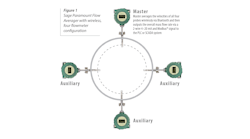Catalytic & Thermal Treatment Market to Reach $22B in 2013
The markets to oxidize pollutants from stationary and mobile sources will grow more than 8 percent in 2013 to $22 billion, according to the latest forecast in the Thermal/Catalytic World Air Pollution Markets report published by the McIlvaine Company.
There are three market segments: mobile sources, stationary engines, and industrial processing. In general, all the technology involves ensuring oxidation either through temperature increase or a combination of more modest increase in the presence of a catalyst. The advent of NOx regulations has introduced another principle labeled reduction. A nitrogen compound such as urea reacts with NOx to form elemental nitrogen and water.
McIlvaine Company’s forecasts also include the particulate filters necessary to minimize soot. This forecast includes the NOx reduction from mobile sources, but not the NOx reduction from industrial processing which is included in another McIlvaine report.
Industrial processors have four equipment options. One is conventional thermal treatment. Another is catalytic treatment. A third equipment type is labeled regenerative thermal oxidizer. McIlvaine Company says the big advantage of this approach is heat recovery. A fourth type is a hybrid, which incorporates both the catalyst and the regeneration.
The report finds the industrial market, not including replacement catalyst, will generate revenues of just over $2 billion next year.
Industrial Thermal Treatment Revenues ($ Millions)
Continent 2013
Africa 49
America 577
Asia 896
Europe 536
Total 2,058
Asia, with its industrial expansion, will be the continental leader with purchases of just under $900 million.
The report shows the mobile market will benefit from a rebound in vehicle sales and tightening regulations. A number of countries have adopted schedules for phasing in PM emission standards for heavy-duty diesel engines that are likely to require advanced after-treatment to meet the relevant national standard. In the Americas, Brazil”s PROCONVE P7 standards beginning in the 2012 model year are likely to require advanced after-treatment. Urea consumption for the heavy truck market in Brazil will grow substantially from a disappointing total of around $15 million this year, McIlvaine Company reports.
Russia has adopted standards based on EURO IV starting in the 2010 model year and standards based on EURO V in the 2014 model year. In the Beijing area, China adopted standards equivalent to EURO IV in 2008, and has proposed adoption of EURO V- equivalent standards in 2012. In addition, several countries that have applied for membership in the European Union will adopt EURO standards if accepted.
Platinum and palladium prices are expected to increase this year as a rebound in U.S. automobile sales boosts demand for the metals used in catalytic converters. Rhodium prices, which slumped 38 percent in the past 12 months, are predicted by some analysts to increase 62 percent to $2,000 an ounce by the end of 2013.
The stationary engine market will grow robustly in the next few years led by the U.S. Nearly 1 million existing, stationary diesel engines are affected by new federal air quality rules, in addition to more than 300,000 gasoline, propane and natural gas engines, including thousands of engines in the Hawaiian Islands.
The new RICE National Emissions Standards for Hazardous Air Pollutants (NESHAP) rules affect engines used for generators, pumps, compressors and other common plant equipment. The requirements” full compliance date is May 3, 2013 for diesel (CI) engines and October 19, 2013 for gasoline and natural gas (SI) engines.
For more information on Thermal/Catalytic World Air Pollution Markets, click here.

